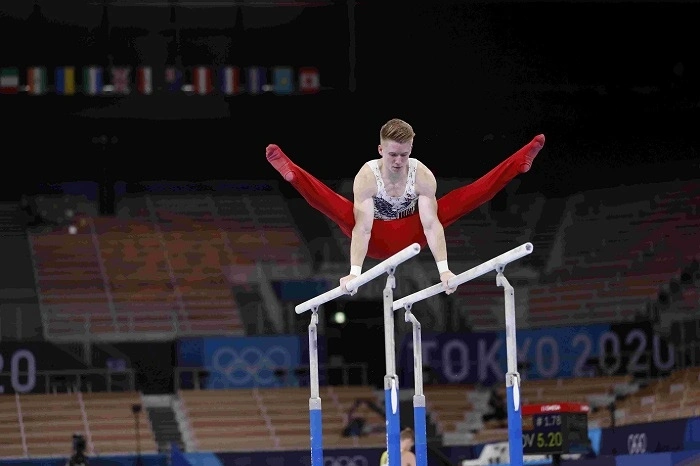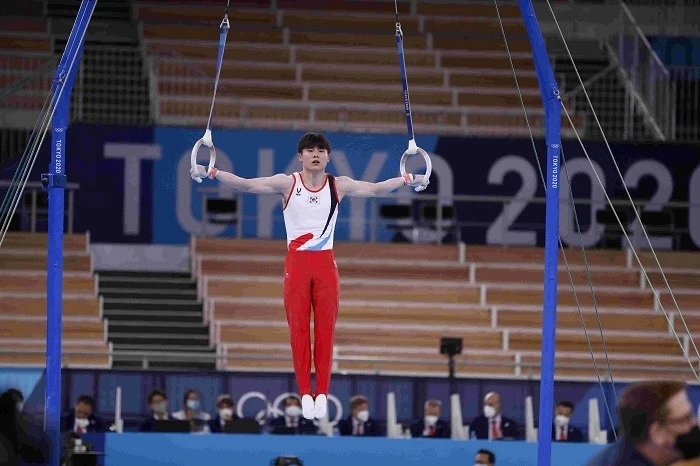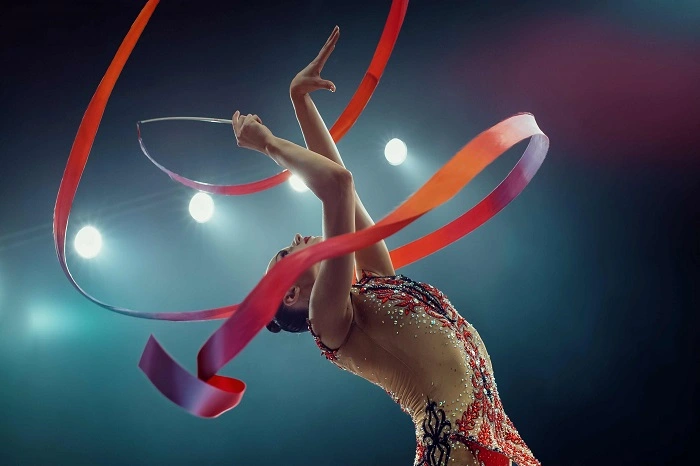Gymnasts who participate in rhythmic gymnastics practice alone or in groups on a floor using various apparatuses, such as hoops, balls, ribbons, clubs, and ropes. The sport blends aspects of dance, calisthenics, and gymnastics; athletes need to be coordinated, strong, flexible, and agile.
The International Gymnastics Federation oversees rhythmic gymnastics, which it initially accepted as a sport in 1963. Other sports inspired the development of rhythmic gymnastics. German equipment works, Swedish free exercise methods, group gymnastics, and traditional ballet influenced it.
Rhythmic Gymnastics Olympics History
The individual competition for rhythmic gymnastics introduced this traditionally female-only sport to the Olympic schedule. In 1984, Rhythmic Gymnastics was added to the Olympic Games as an individual all-around competition, and in 1996, the Olympics included a group all-around competition.
Since rhythmic gymnastics entered the Olympic program, Eastern European nations, particularly Russia, have conquered this event. Russia has won 10 of the 17 available titles. Spain, Canada, and Israel are the only countries to threaten their power and win gold medals.
The Spanish team won the first gold medal in the brand-new tournament in 2996.
Rhythmic Gymnastics Olympics Rules
The simplest way to describe rhythmic gymnastics is as movement expression.
- It blends features of creative gymnastics with traditional dance.
- Gymnasts use four Apparatus: ribbon, hoop, ball, and clubs.
- Music with vocals can be used and plays a crucial part during gymnasts' performances. Rhythmic gymnastics is an activity exclusive to women.
- Gymnasts use each piece of Apparatus once during their four performances in the individual events.
- 75 to 90 seconds must pass between each performance. Five gymnasts from the same Committee will compete twice in the group competition.
- The Apparatus used by the gymnasts varies in the second routine; in the first, they are all required to use the same piece.
- The routine is judged by combining the D-score, the A-score, and the E-score.
Rhythmic Gymnastics Olympics Competition Format
In rhythmic gymnastics competitions, qualifiers and event finals are typically separated. In certain tournaments, there's also an individual all-around final. There are qualifying rounds and individual and group all-around finals, but no event finals in the Olympics.
Currently, the total of a routine's challenges, performance, and artistic points is its final score; any extra penalties received are reduced. The performance and artistry scores start at 10 points and decrease for certain gymnasts' errors, while the challenge score is flexible without a limit.
The time, queue and responsible judges apply penalties. Such penalties consist of:
- If the Apparatus goes out of the floor area.
- If gymnasts leave the floor area.
- The workout duration goes over or falls below the suggested minimum time.
- The gymnast's dress is not according to the rules.
- Interaction with the coach as the exercise is being performed.
- Verbal exchanges with group gymnasts throughout the exercise.
- If the first piece of Apparatus is still on the floor, remove it and pick a fresh one from the side.





.webp)
